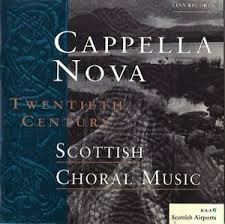William Sweeney: Life Studies [download]
Computer typeset score (45p) and clarinet part (22p) saved as PDF for immediate download.
“This series of pieces for Clarinet and Piano was begun in 1984 and completed in 1996.
They can be performed individually, in groups, or as a complete set. (Performance in the order of composition, as printed, is probably not the most effective arrangement).
While all share a common motivic phrase, each piece focuses on particular technical problems of clarinet playing and combines these with various ethnic musical styles or extra-musical allusions.
All of the studies are notated for Clarinet in Bb.
Life Studies I-III were written for Alan Hacker; IV was commissioned by Lawrence Gill in memory of Sir Alexander Gibson and the set as a whole is dedicated to all my fellow students of Berlioz’ “most heroic of instruments”.
I The problems are: 1) micro-tones and glissandos, produced by a combination of embouchure modifications and non-standard fingerings (the player should find those most appropriate to their own system and set-up) and: 2) sudden changes of dynamic and tone-colour. The style is a representation of the traditional Turkish style of clarinet-playing: therefore a pronounced and varied vibrato is appropriate.
II The musical effect of traditional Japanese music, rather than how it sounds, underlies this piece - as if contemplating in a formal stone garden. For the clarinet, the problem is to play cleanly and softly, without inflection and to produce the same unchanging dynamic across all registers.
III Here the piano imitates the sound of the West African kora (harp-lute), while the clarinet is the griot (bard, praise-singer). The player has to produce a variety of articulations while negotiating tricky finger-patterns and grace-notes.
IV It seemed to me that dynamic shading over long time-spans was one of the features of an “Alex” performance, so here the clarinettist has to take individual notes from, and to, the edge of audibility, while sustaining a musical line through the whole piece. The piano part is a kind of abstract distillation of a Sibelius accompaniment.
V Japanese influence again, although this time closer to the phrasing of the shakuhachi (bamboo flute). I have not indicated any use of vibrato produced as a shakuhachi player would i.e. by trilling on keys or finger-holes further down the instrument than the pitch actually being played, but the clarinettist might like to experiment with these. The specific clarinet technique explored is legato playing. Besides playing smoothly across, as well as within, registers, the slur-within-a-slur indicates a degree of smoothness approaching portamento.
VI Here the exercise is staccato playing, in all registers and dynamic levels with coordination problems set by cross-fingered sequences. The music begins with a reminiscence of the sound of the Andean harp and continues with a flavour of the dark Argentinian tangos of Astor Piazzolla.
VII Bulgarian music is the background for this study, the only one of the set to demand sheer finger velocity as a factor, although neat articulation is also required in order to clarify the metrical schemes.”



![William Sweeney: Nine Days [download]](https://images.squarespace-cdn.com/content/v1/5f3690f6995b741710ab4824/1612468595877-BXLXPGSI02NWPQ7SPS0U/sweeney-days.png)



![William Sweeney: March Air [download]](https://images.squarespace-cdn.com/content/v1/5f3690f6995b741710ab4824/1612468664671-8JAWNHBMSVQ1CSTF7CDN/sweeney-march.png)

![William Sweeney: Caolas [download]](https://images.squarespace-cdn.com/content/v1/5f3690f6995b741710ab4824/1612469394528-OM9H7ES5TBCGJ4693GPE/sweeney-caolas.png)

